#Smart TV App Developer
Explore tagged Tumblr posts
Text
0 notes
Text
#Android TV App Development#Apple TV App Development#Smart TV Application Development#TV application development
0 notes
Text
Contribution of Android TV Apps in Revolutionizing Television Industry
There is no doubt Android TV apps have emerged as more important in the world. This revolutionized technology has not only changed the way we consume content but has also change the television experience for users. With a different type of content, and user-friendly interfaces, Android TV app development is really revolutionizing in television industry.
#Android TV App Development#Apple TV App Development#Audio Streaming App Development#OTT App Development#Smart TV Application
1 note
·
View note
Text
#Custom Android App Development#Wearable App Development#Smart TV App Development#Custom Multiplatform App Development#On-Demand Cross-Platform applications
1 note
·
View note
Text
The Future
It's always grating to read or listen to random members of the public talk about AI in the media, and it is much more grating to listen to "futurists" or politicians or so-called experts who have absolutely no domain expertise nor background in machine learning talk about things "AI" will be able to do in the future. A lot of the time, they will predict that AI (which means conversational agents based on large language models trained with transformers and attention) will do things in the future that can already be done by humans, and by computers without any AI, machine learning, or large text corpora, back in the 90s. Politicians on the other hand sometimes use "AI" to deflect criticisms of infeasible ideas. How will this work, exactly? AI!
Sometimes using AI as a buzzword is the point. Nobody wants to hear "we will develop another app".
It usually doesn't take extreme forms like "In the future, AI will allow us to transplant human hearts", but I have seen weaker forms like "In the future, technologies like ChatGPT will make genome-wide association studies and automatic drug discovery possible". You don't need large language models for GWAS or drug discovery. The data sets for this are very different, and I doubt a system like ChatGPT could just absorb a large CSV file of medial data if you pasted it into the conversation.
If you look at claims about "the future" from the recent past, you see the same thing said about blockchain, web 2.0 mash-ups and tagging, the semantic web/ontologies, smart homes, and so on. "In the future, we will all have smart fridges" – "In the future you will begin your day by asking Siri what your appointments are and what you should eat for breakfast" – "In the future your PC will print your newspaper at home." – "In the future you will pay for groceries out of your Bitcoin Wallet."
If you push back, and you point out that a this new claim sounds like a bullshit claim about blockchain, smart fridges, and the semantic web, you usually hear "That's what they said about cars. That's what they said about television." Never mind who "they" are. Never mind that they didn't say that about cars, they said that about Bitcoin. Cars are just a massive outlier. Cars were immensely successful, and they were largely unchanged for 120 years, with for wheels and an internal combustion engine that runs on petrol. Cars are noisy, smelly, and dangerous to pedestrians and occupants. For decades, leaded petrol used in cars distributed lead into the air and int the food supply. Cars depend on an infrastructure of asphalt roads and petrol stations. This is different from what they said about CDs or monorail or QR codes or pneumatic tubes. As for TV, it is usually invoked to say "People thought TV would rot our brains, yet here we are". There is no denying that TV had profoundly changed how people spend their time, changed politics, changed how fast the news cycle is, and so on, often for the worse.
It's so easy to refute "that's what they said about cars" that I could probably fill 50 A4 pages with the history of technologies that failed in some way, purely from memory, and then find old newspaper quotes from optimists and futurists that compared the naysayers (correct in hindsight) with car skeptics, and I could fill another 50 pages with ways inventions like cars and TV and the Internet profoundly changed society, and then find quotes from futurists that explain that the Internet is really just a better fax machine, and the car is like a faster horse, so we have nothing to worry about.
There's another way to dismiss skeptics of new technology, and it's harder to refute, even though it operates on the same kind of hindsight bias:
Imagine the year is 1995. What couldn't you achieve if only you knew that computers and the Internet would be big? Imagine you can send a letter to yourself in 1995. Wouldn't you want to tell your former self that the Internet will be the Next Big Thing? Wouldn't you want to tell your former self that by 2015, everybody will have an Internet-connected computer in their pockets?
It's easy to refute the hindsight bias of "that's what they said about cars" with example after example of technologies that didn't catch on for 100 years like cars did.
Where's the error here? If you say something like "Language-model AI is the future! Wouldn't you rather get on the bandwagon sooner than later?" you risk investing your money into a scam just to get in on the ground floor.
But really think it through: Imagine the year is 1985. A time traveller tells you that computers are going to be big. Everybody is going to have one. What do you do? Do you quit your job and work in the computer industry? If not, do you buy a computer? Which one? A C64? An IBM PC XT? Atari ST?
I don't know how much you could really do with this information. Should you invest your savings into Atari? Should you learn to program?
Imagine the year is 1985. A timer traveller tells you that the CD is going to replace vinyl and cassette tapes, then there will be mp3 players, but nothing will really replace mp3 players, and then streaming music from centralised servers will replace mp3 players. Nothing will really replace the CD, but the music industry will be completely different. Nobody will sell music on SD cards, mini discs are better than CDs in terms of technology, but they solve the wrong problem. All the cool indie bands that released free promo mp3s in the 2000s will split up or sell out. "What's an mp3?", you ask.
Imagine the year is 2005. Every pseudo-intellectual Internet commenter seems to think VHS won against BetaMax because of pornography. They are going to produce pornography for HD-DVD. You think Blu-Ray is dead in the water. A time traveller appears, and he tells you that actually, VHS won against BetaMax because the tapes are longer, and it allows you to VCR a long television program. Yes, they are going to produce pornography for the HD-DVD first, but it doesn't matter. Ever since Internet pornography, nobody goes to the sex shop anyway, just to risk coming out of the door with a shopping bag full of HD-DVDs, just as his neighbour's wife is coming out of the liquor store across the street. Still the Blu-ray won't replace DVDs like DVDs replaced VHS, because you can still play a DVD in a Blu-ray player, and it will all be streaming in a couple of years anyway.
What will you do with this information, other than buy a Blu-ray player?
Imagine the year is 1923. A time traveller tells you that cars are going to be big. Really big. Everybody will own one, and a garage. Petrol stations are everywhere already, but soon there will be traffic jams. Cities will be planned for cars, not people.
Should you buy a car now? Should you wait for the technology to mature?
The year is 2025. Somebody tells you that LLMs are going to be big. Bigger than they are. Bigger than ever. Bigger than Jesus. He tells you you're a sucker if you don't use ChatGPT. You think he's right, but you don't work in a job that can be done by ChatGPT. You work at a bakery. Maybe just not yet?
What should you do?
I think the idea that you should get in now, and you will "miss the boat" if you don't learn to use GenAI and conversational agents, that idea is just stupid. It's half special pleading, half Pascal's Wager, and a lot of hindsight bias. You couldn't really "get into" other technologies before they matured. Futurists confidently predicted in 2022 that "prompt engineer" was going to be a job, when obviously companies like Google, Anthropic, and OpenAI had every reason and every incentive to work on making their systems better understand users, to make prompt engineering obsolete. At some point owning a car meant learning to be a car mechanic or having a chauffeur who was your personal car mechanic, and then the technology matured. Cars are more complex now, and harder to repair when something breaks, but they are also more reliable and have diagnostic lights.
So should you use ChatGPT or Claude now, just to get ready for "The Future"? I don't know. All I know is that AI won't be a faster horse.
13 notes
·
View notes
Text
Using a smart tv completely obliterates any and all mildly positive thoughts I might accidentally develope about smart cars and the like. My tv can't turn on and let me switch inputs to the playstation without wasting 5 minutes of my life trying to load apps and predict what input I want it on and fails to respond at all in the meantime, and you want me to believe this technology is a good idea to put on an exploding tin can going 60 5 feet apart from 10 other explosing cans?
22 notes
·
View notes
Text
Soundbar Setup Tips: Maximize Your Home Audio Performance
Soundbars have revolutionized the manner people enjoy audio in their houses, supplying a handy and incredible answer for reinforcing the sound of televisions and other gadgets. Compact, elegant, and relatively smooth to installation, soundbars have become an vital a part of modern-day home leisure systems. This article delves into the various elements of soundbars, consisting of their features, advantages, kinds, and suggestions for deciding on the right one in your desires.
High-quality soundbar with subwoofer
The Evolution of Soundbars
Televisions have gone through a good sized transformation over the last few decades, turning into slimmer and more visually attractive. However, this layout evolution has frequently come at the cost of audio best, as thinner TVs lack the distance for robust built-in audio system. Enter the soundbar – a sleek, standalone audio tool designed to cope with this obstacle by using turning in advanced sound high-quality.
The first soundbars emerged inside the overdue Nineties and early 2000s, typically as a response to the developing reputation of flat-screen TVs. These early models presented a easy way to beautify TV audio with out requiring a complex surround sound machine. Over time, soundbars have developed to encompass superior functions like wireless connectivity, integrated voice assistants, and Dolby Atmos assist, making them a versatile audio answer for diverse desires.
Key Features of Soundbars
Modern soundbars come packed with functions that cater to one of a kind choices and budgets. Some of the maximum remarkable capabilities include:
Sound Quality: Soundbars are designed to supply rich, immersive audio with enhanced readability and intensity. Many fashions consist of multiple drivers and subwoofers to create a balanced sound profile.
Compact Design: Unlike conventional domestic theater systems, soundbars are compact and may be without difficulty set up on a wall or positioned on a TV stand without occupying a lot space.
Connectivity Options: Soundbars usually offer numerous connectivity alternatives, such as HDMI ARC, optical enter, Bluetooth, and Wi-Fi, allowing seamless integration with TVs, smartphones, and other devices.
Virtual Surround Sound: Some soundbars use advanced audio processing technology to simulate surround sound, supplying an immersive enjoy without the need for multiple audio system.
Smart Features: Many soundbars come equipped with smart capabilities like voice control, app-primarily based controls, and compatibility with clever domestic ecosystems.
Customization: High-end soundbars frequently consist of EQ settings and presets that allow customers to tailor the sound to their alternatives or particular content material.
Types of Soundbars
Soundbars are available in numerous configurations to match unique desires and setups. Here are the principle sorts:
All-in-One Soundbars: These fashions encompass integrated subwoofers and drivers, making them a compact, standalone answer for higher audio.
Soundbars with External Subwoofers: These soundbars include a separate subwoofer unit, handing over enhanced bass overall performance. The subwoofers are frequently wireless, allowing bendy placement in the room.
Soundbar Systems with Surround Speakers: For a true surround sound enjoy, some soundbars encompass extra satellite audio system. These systems are ideal for home theater lovers.
Dolby Atmos Soundbars: Designed for a premium audio revel in, these soundbars guide Dolby Atmos technology, which creates a 3-dimensional soundstage with the aid of adding top to the audio.
Compact Soundbars: These are smaller soundbars designed for compact areas or secondary TVs. While they may lack superior features, they nevertheless provide giant audio improvements over integrated TV audio system.
Benefits of Soundbars
The recognition of soundbars stems from the numerous blessings they provide:
Enhanced Audio Quality: Soundbars significantly improve the audio experience as compared to traditional TV audio system, making talk clearer and sound outcomes more impactful.
Space-Saving Design: Their slender and streamlined layout makes soundbars a realistic desire for modern-day dwelling spaces, where area is probably constrained.
Ease of Installation: Setting up a soundbar is typically trustworthy, frequently requiring only a single cable connection or wi-fi pairing.
Affordability: While high-cease models may be expensive, there are many price range-pleasant options that offer awesome performance.
Versatility: Soundbars can be used for extra than simply TV audio; they are remarkable for streaming track, gaming, and even arms-free calls, depending at the model.
Factors to Consider When Choosing a Soundbar
Selecting the right soundbar involves thinking about several elements to make certain it meets your desires and preferences:
Audio Quality: Pay attention to the soundbar's specs, which include the wide variety of channels, wattage, and frequency range. Listening to a demo, if feasible, also can assist.
Room Size and Layout: Choose a soundbar that fits the dimensions of your room. For larger rooms, don't forget fashions with outside subwoofers or additional speakers.
Compatibility: Ensure the soundbar is like minded along with your TV and different gadgets. Look for features like HDMI ARC or eARC for seamless integration.
Connectivity Options: Consider your selected connection technique, whether it's Bluetooth, Wi-Fi, or bodily cables.
Features and Functionality: Determine which functions are most critical to you, consisting of digital surround sound, voice assistants, or Dolby Atmos aid.
Budget: Set a budget and examine models inside your rate range. While top rate soundbars provide superior functions, there are tremendous mid-variety and budget alternatives available.
Setting Up Your Soundbar
Setting up a soundbar is usually quick and easy. Here are a few popular steps to follow:
Position the Soundbar: Place the soundbar without delay underneath or above your TV for most beneficial audio alignment. If mounting it on a wall, make sure it is at ear level.
Connect to Your TV: Use the preferred connection technique, inclusive of HDMI ARC, optical cable, or Bluetooth. Follow the manufacturer’s instructions for setup.
Adjust Settings: Access the soundbar’s settings to customise the audio profile. Experiment with presets or EQ adjustments to find the satisfactory sound in your space.
Test the Audio: Play distinctive styles of content to ensure the soundbar can provide steady overall performance across films, track, and TV indicates.

Maintenance and Troubleshooting
To preserve your soundbar acting optimally, observe these renovation guidelines:
Keep it Clean: Dust the soundbar regularly to prevent dust buildup, that may affect sound first-rate.
Update Firmware: Check for firmware updates from the producer to make sure your soundbar has the today's capabilities and fixes.
Check Connections: Periodically investigate cables and connections to make certain they're stable and functioning properly.
Troubleshoot Issues: If you enjoy problems like audio lag or connectivity troubles, seek advice from the person guide or searching for support from the manufacturer.
2 notes
·
View notes
Text
5 key Trends in INFORMATION and COMMUNICATION TECHNOLOGY (ICT)
In today's ever-changing technological landscape, staying current on the latest trends is critical for both individuals and businesses. These patterns influence how we communicate, connect, and complete tasks in both our personal and professional lives. The following are five key trends in ICT that are making waves now, along with examples to demonstrate their significance.

1. CONVERGENCE
Convergence in ICT refers to the combination of various technologies to generate forms of communication and information. This trend focuses on establishing a seamless user experience by combining multiple functionalities into a single device or platform. Convergence has been a driving force in the creation of smartphones, which combine a phone, camera, music player, and internet browser in one device.
Examples:
- Smartphones: Combine various functions like calling, browsing, and photography.
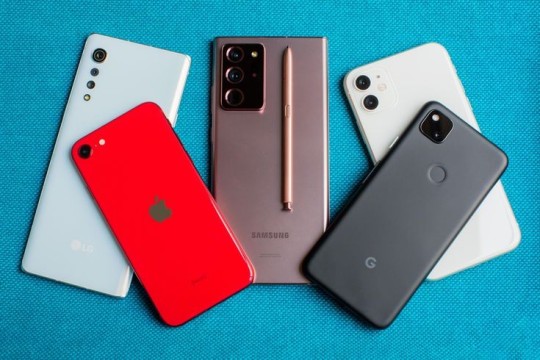
- Smart TVs: Integrate television with internet browsing and streaming services.
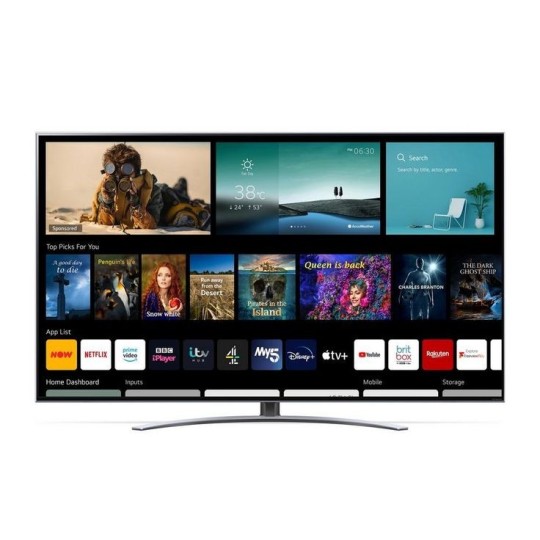
2. SOCIAL MEDIA
Social media has become an essential part of our daily lives, changing the way we communicate and share information. Platforms such as Facebook, Twitter, and Instagram enable users to interact, create, discuss, modify, and share user-generated content. These platforms allow users to interact with a global audience, making social media an effective tool for personal and professional communication.
Examples:
- Facebook: Connects people globally and allows for sharing of updates, photos, and events.
- Twitter: Known for its microblogging feature, where users post short, concise updates.
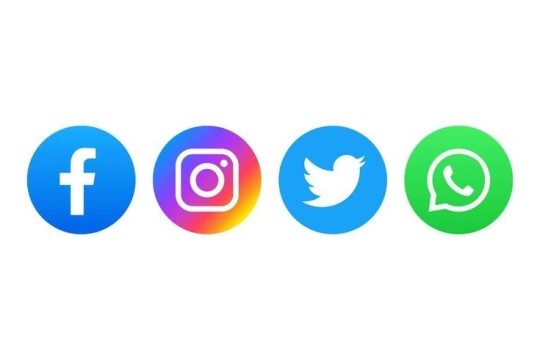
3. MOBILE TECHNOLOGIES
The proliferation of smartphones and tablets has changed the way we access information and complete jobs. These gadgets have evolved into mini-computers capable of running a variety of apps that were previously limited to desktops. Mobile technology has permitted internet access at any time and from any location, making it important in today's fast-paced society.
Examples:
- iOS: Used in Apple devices such as iPhones and iPads.
- Android: An open-source operating system developed by Google, used by many mobile manufacturers.
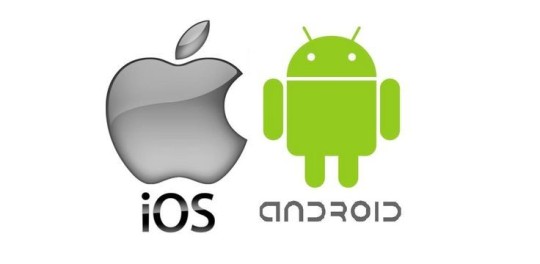
4. ASSISTIVE MEDIA
Assistive media refers to technologies and services that help people with visual and reading impairments. These technologies make sure that everyone, regardless of physical restrictions, has access to and benefits from digital material. Assistive media is more than just accessibility; it is also about inclusivity.
Examples:
- Screen readers: Convert text to speech, allowing visually impaired users to interact with digital content.
- Braille displays: Provide tactile output of text for users who are blind.
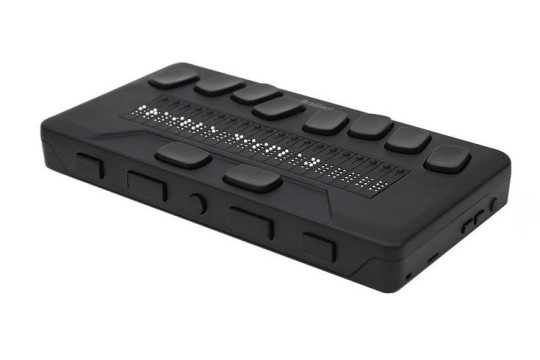
5. CLOUD COMPUTING
Cloud computing has transformed how we store, access, and manage data. Users can utilize remote servers hosted on the internet to store data and access apps from anywhere in the globe. This tendency has resulted in enhanced productivity, scalability, and collaboration, particularly in the corporate sphere.
Examples:
- Google Drive: Allows users to store files online and access them from any device.
- Dropbox: A cloud storage service that enables easy file sharing and backup.

These developments demonstrate ICT's dynamic nature and tremendous impact on our lives. These trends, whether they improve connectivity, enable accessibility, or revolutionize data management, are altering the future of technology in previously imagined ways. Staying educated and flexible to these trends will be critical to success in the digital age.
Passed by: JEVE ASHLEY C. SUAGA
2 notes
·
View notes
Text
How IPTV Works on Amazon Fire Stick
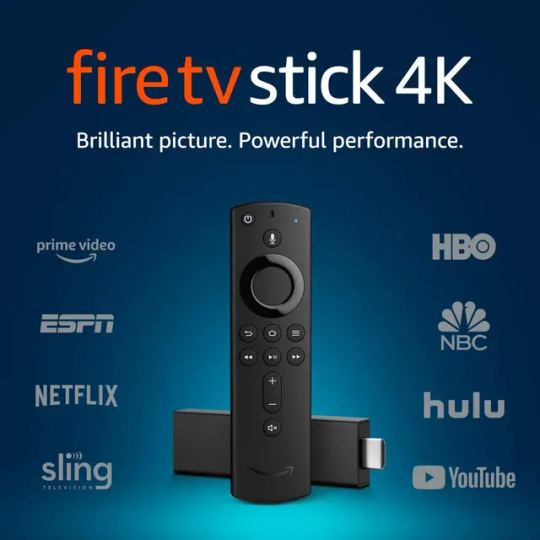
The Amazon Firestick has become a popular device for streaming media, offering a wide range of apps and services that cater to diverse entertainment needs. Among these, Internet Protocol Television (IPTV) is gaining traction as a versatile and convenient way to watch television. This blog will explain how IPTV works on Amazon Firestick, detailing the setup process, benefits, and considerations.
What is IPTV?
IPTV stands for Internet Protocol Television. Unlike traditional television that broadcasts via satellite or cable, IPTV delivers TV content through the internet. This method provides greater flexibility and a richer set of features, including on-demand video, live TV, and interactive services.
Setting Up IPTV on Firestick
To use IPTV on your Amazon Firestick, you’ll need to follow a few steps to set up the necessary applications and configure the service. Here’s a step-by-step guide:
1. Prepare Your Firestick
Before installing any IPTV service, ensure your Firestick is ready for new apps:
Update Your Firestick: Make sure your Firestick is updated to the latest software version. You can do this by going to Settings > My Fire TV > About > Check for Updates.
Enable Apps from Unknown Sources: Go to Settings > My Fire TV > Developer Options and turn on Apps from Unknown Sources. This allows you to install third-party applications that are not available on the Amazon Appstore.
2. Install an IPTV App
There are several IPTV apps compatible with Firestick. Some popular ones include:
Smart IPTV
Perfect Player
IPTV Smarters Pro
TiviMate
Here’s how to install one:
Using the Downloader App:
Install Downloader: From the Firestick home screen, go to Search and type “Downloader”. Select the Downloader app and install it.
Open Downloader: Launch the Downloader app.
Enter URL: In the URL field, enter the URL of the IPTV app’s APK file. For example, for IPTV Smarters Pro, you might use a specific URL provided by the IPTV service or find it on their official website.
Download and Install: Once the APK file is downloaded, the installation process will begin. Follow the on-screen prompts to install the app.
3. Configure the IPTV App
After installing the IPTV app, you need to configure it to start watching TV. The configuration process typically involves:
Entering M3U URL: Your IPTV provider will give you an M3U URL, which is a playlist file containing the IPTV channels. Open the installed IPTV app and look for an option to add a playlist or enter the M3U URL.
EPG URL: Some services also provide an Electronic Program Guide (EPG) URL, which allows you to see TV schedules and program information.
Login Details: Some IPTV services require you to log in with a username and password. Enter the credentials provided by your IPTV service.
4. Start Watching
Once the IPTV app is configured, you can start watching your favorite TV channels and on-demand content. Navigate through the app’s interface to access live TV, movies, TV shows, and other features provided by your IPTV service.
Benefits of Using IPTV on Firestick
1. Wide Range of Content
IPTV services often offer a vast array of channels from different countries and in various languages, providing access to a diverse range of content.
2. On-Demand Viewing
One of the biggest advantages of IPTV is the ability to watch content on demand. You can pause, rewind, or fast-forward through programs, providing a flexible viewing experience.
3. High-Quality Streaming
With a stable internet connection, IPTV can deliver high-definition (HD) and even 4K quality streams, enhancing your viewing experience.
4. Interactive Features
Many IPTV apps come with interactive features such as live TV pause, recording, and electronic program guides (EPG), making it easier to manage your viewing schedule.
Considerations When Using IPTV on Firestick
1. Reliable Internet Connection
IPTV requires a stable and high-speed internet connection. Buffering and streaming issues can occur with slower connections, affecting the viewing experience.
2. Legal and Security Concerns
Not all IPTV services are legal. It’s important to choose a reputable and legal IPTV provider to avoid potential legal issues and security risks.
3. VPN for Privacy
Using a VPN can help protect your privacy and bypass geographic restrictions. Ensure your VPN service is compatible with Firestick for seamless integration.
Conclusion
IPTV on Amazon Firestick offers a powerful and flexible way to access a wide variety of television content. By following the steps outlined above, you can set up an IPTV service on your Firestick and enjoy the benefits of on-demand viewing, high-quality streaming, and interactive features. As long as you have a reliable internet connection and choose a reputable IPTV provider, you can transform your Fire stick into a comprehensive entertainment hub.
2 notes
·
View notes
Text
bei blogs #1 - life using technology .ᐟ
Technology, smart devices, digital services, and even software applications have become prevalent in this generation, changing everyone's lives, including mine. Thanks to these recent developments and advancements, life has become lighter and easier for everyone these days.
So, for this blog, I will be sharing which technologies, devices, and software applications I use, and how they help me go about my daily and college life. Let's go! ꒰ᐢ. .ᐢ꒱
⠀⠀⠀⠀⠀⠀⠀⠀⠀⠀⠀⠀ ₊˚ ✧ ‿︵‿୨୧‿︵‿ ✧ ₊˚
#1 Smart Phone


There's not a day that goes by without me using my smartphone. It has become a vital part of my daily life to the point that the first thing I do upon waking up is to check this device, making sure that I am up to date with various matters (chika & chismis!)
Using smartphone also helps me stay connected with my friends and family. To communicate with them, I use Messenger, an application that is installed here on my phone where I can do chats and videocalls to whoever I want.
Moreover, whenever I come home from school and I happen to have a class while travelling, I use my cellphone to join the meeting, ensuring I won't be late for our class and can catch up on the discussion because it is really convenient. However, it depends on whether I have a mobile data and a good signal.
I also use this phone to capture beautiful pictures and videos such as capturing a wonderful scenery, a special person, a precious moment with my friends, my adorable pets, and even myself. Want some TMI? I have 29,000+ photos and videos save in my camera roll! (。•̀ᴗ-)✧


⠀⠀⠀⠀⠀⠀⠀⠀⠀⠀ ⠀⠀⠀ ₊˚ ✧ ‿︵‿୨୧‿︵‿ ✧ ₊˚
#2 Laptop
Another technology I frequently use is my laptop. Although it's used among all members of my family, I'm the one who uses it the most as evidenced by the wallpaper.
I use laptop to accomplish tasks especially academic related ones. It's a lifesaver for someone like me who finds it challenging to complete tasks solely on a smartphone due to its limited screen size. With my laptop along with a monitor by my side, I can effortlessly do multiple tasks at once, which saves me time. Furthermore, whenever we have online classes, I use this device to join meetings through Google Meet.
But my laptop isn't just for academics; it's also my 'home cinema' since our TV broke down and I can't afford to go to the local cinema. Through this device, I indulge myself in watching various shows and movies such as Grey's Anatomy, One Piece, Marry My Husband, Nana Tour, EN-O'clock, and so on via Sflix, Youtube, and Fmovies when I have free time.
Having a dual monitor setup allows me to watch shows and do tasks simultaneously, which is really beneficial for me!

⠀⠀⠀⠀⠀⠀⠀⠀⠀⠀ ⠀⠀⠀ ₊˚ ✧ ‿︵‿୨୧‿︵‿ ✧ ₊˚
#3 Earbuds


Next on the list is my precious earbuds! It comes with a cute cover featuring Pompompurin. The case was actually bought by my sister but she had to give them to me because she thought the case included the earbuds themselves. Luckily, the case fit my earbuds perfectly so she had no choice but to hand it over to me!
My earbuds are truly a lifesaver, especially during my travels to and from school. I usually endure a journey of 1 hour and 30 minutes, which involves walking, riding trains, and jeeps. Fortunately, the journey isn't as worse as it used to be because I have my favorite music blasting through my earbuds, making my commute lighter than ever.
⠀⠀⠀⠀⠀⠀⠀⠀⠀⠀ ⠀⠀⠀ ₊˚ ✧ ‿︵‿୨୧‿︵‿ ✧ ₊˚
#4 Microsoft To Do

We now proceed to my favorite software applications! Let's start with Microsoft To Do. This application is incredibly essential for me, especially as a third-year college student taking up Nursing
In Nursing, there are numerous activities and tasks that we must complete, such as return demonstrations, concept maps, NCPs, and more. With Microsoft To Do, I can organize these tasks and categorize them based on their due dates. Since I started using Microsoft To Do, I've become much more efficient in completing tasks.
What I appreciate most about this application is its accessibility—it's available on both my laptop and smartphone, and I can even use it offline. This feature is very convenient, especially on my phone, where I use it as a widget to track my progress and identify which activities are nearing their due dates.
⠀⠀⠀⠀⠀⠀⠀⠀⠀⠀ ⠀⠀⠀ ₊˚ ✧ ‿︵‿୨୧‿︵‿ ✧ ₊˚
#5 Twitter, Facebook, and Instagram
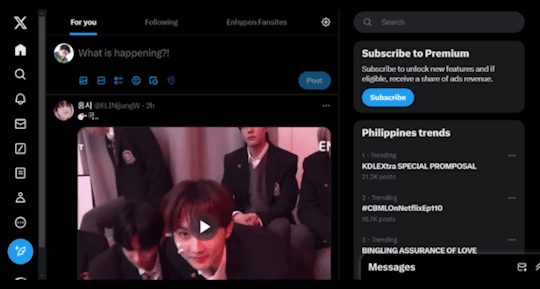
Now, these are social media applications that I mostly use!
Starting with Twitter—there isn't a time when I'm not using this application. It serves as my online newspaper, offering a huge amount of information across different categories. Whether it's local or international news, updates about my favorite K-pop boy group, exposing threads, or any entertaining content, Twitter has it all!
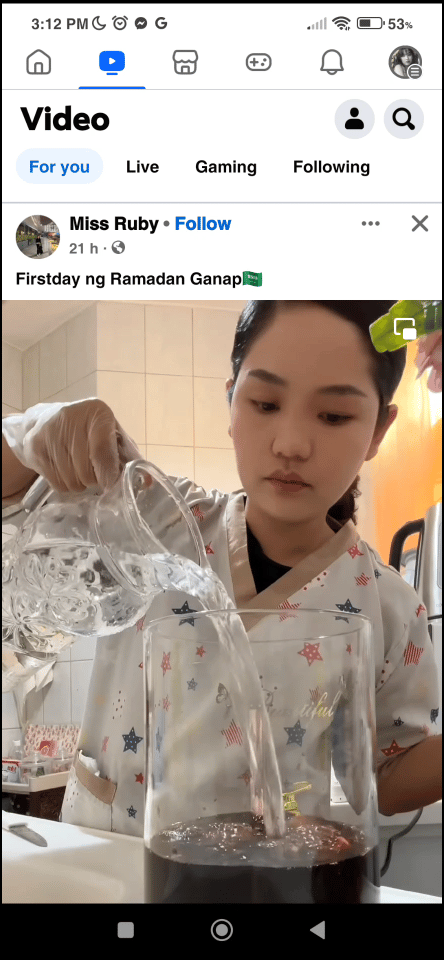

Next on my list are Facebook and Instagram. I use Facebook daily, especially when I want to watch random videos. My favorites include summaries of movies and shows, bakers making and designing their cakes, videos of MSA, and vlogs!
As for Instagram, I use it to post pictures and videos of myself or what happened during my day or throughout the month. Additionally, I use both applications to keep up with my friends and see what's going on in their lives. I show support for their posts by liking and commenting.
Moreover, just like Twitter, I use these platforms to get updates from my favorite celebrities, like Kim Mingyu (the gorgeous man on the right), Enhypen, Mark Lee, Jeon Wonwoo, and so on! ✩࿐࿔
⠀⠀⠀⠀⠀⠀⠀⠀⠀⠀ ⠀⠀⠀ ₊˚ ✧ ‿︵‿୨୧‿︵‿ ✧ ₊˚
That wraps up my list of technologies and applications that I use in my daily life! As I end this blog, I want to express how the continuous development and innovation of technologies have significantly helped me in accomplishing tasks more easily and efficiently.
Did you enjoy reading my blog? What technologies and applications helped you in your daily life? Share your thoughts on the comments below!
⠀⠀⠀⠀⠀⠀⠀⠀⠀⠀ — Bei ‧₊˚❀༉‧₊˚.
2 notes
·
View notes
Text
Best Screen Mirroring App for Android to TV Free
In today's interconnected world, the ability to seamlessly mirror your Android device's screen onto a TV has become a valuable feature. Whether you want to share photos, videos, or presentations, or enjoy mobile games on a larger display, screen mirroring apps offer a convenient solution. This article aims to introduce you to some of the best free screen mirroring apps for Android devices, allowing you to amplify your viewing experience without breaking the bank.
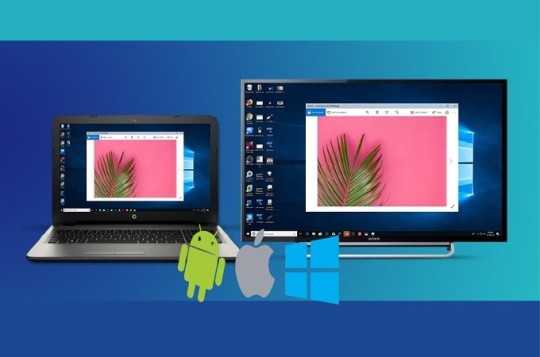
Screen Mirroring
What is Scrcpy?
Scrcpy is an open-source and highly efficient tool designed for screen mirroring and controlling Android devices from a computer. This tool offers a seamless way to display your Android device's screen on your computer's display, enabling you to manage your device's content, apps, and interactions with ease.
How to Download and Install Scrcpy?
Step 1: Download and install the Scrcpy app on your Android or iOS device. Step 2: Download and install the Scrcpy software on your PC from the Scrcpy website. Step 3: Connect your Android or iOS device to your PC via Wi-Fi. Step 4: Open the Scrcpy app on your Android or iOS device and click on "Scan to connect." Step 5: Scan the QR code displayed on your PC's screen. Step 6: Click on "Start Now" to start mirroring your Android or iOS device's screen to your PC.
Samsung Smart Thing
If you're a Samsung user, the SmartThings app provides an excellent option for screen mirroring. This app goes beyond just mirroring and allows seamless integration with Samsung smart TVs, making it easy to connect and share content wirelessly. It's a great choice for users with both Samsung smartphones and TVs.
How to Download and Install?
Step 1 - Open Google Play Store: On your Android device, locate and open the Google Play Store. You can typically find its icon on your home screen or in the app drawer. Step 2 - Search for the App: In the search bar at the top of the Play Store, type "Samsung SmartThings" and press the "Search" button. Step 3 - Find the App: Look for the official "SmartThings" app by Samsung. It should have the Samsung logo and be developed by "Samsung Electronics Co., Ltd." Step 4 - Select the App: Tap on the app icon to open its details page. Step 5 - Install the App: On the app's details page, you'll see an "Install" button. Tap on it to start the installation process. Step 6 - Permissions: The app may request certain permissions, such as access to your location or the device's camera. Review the permissions and tap "Accept" or "Allow" to proceed. Step 7 - Download and Install: The app will start downloading and installing automatically. Once the installation is complete, you'll see an "Open" button. Step 8 - Open the App: Tap "Open" to launch the Samsung SmartThings app. Follow the on-screen instructions to set up your account, connect your devices, and start managing your smart home.
Conclusion
In a world where multimedia content dominates our daily lives, screen mirroring has evolved into a necessity for sharing and enjoying content on a larger scale. The Android apps mentioned in this article offer an array of features, from compatibility with various devices to user-friendly interfaces. Whether you're a Samsung enthusiast or using different brands, these free screen mirroring apps provide options to suit your preferences. Explore these apps, and take your multimedia experience to the next level by effortlessly mirroring your Android device's screen to your TV.
2 notes
·
View notes
Text
adding on to this to say that android fuckery doesn't require root, if you sorta trust adguard, or don't care if they know what websites you visit. they run public DNS servers accessible from anywhere, and you can go to settings -> network and Internet -> private DNS and set it to dns.adguard-dns.com .
you can also use Tubular instead of YouTube revanced:
I install/update it using Obtainium:
also adding that the *arr stack is 1) a fucking pain and 2) there's better options, IMO. this is a rough guide for getting a smart TV set up with stremio. you can search, click, watch immediately, and you don't have to wait for the download to complete.
also also adding my lists to add to ublock origin:
https://big.oisd.nl/ https://codeberg.org/oneirophage/filter-list-pull-quotes/raw/branch/main/pull-quotes.txt https://easylist-downloads.adblockplus.org/adblock_premium.txt https://raw.githubusercontent.com/DandelionSprout/adfilt/master/AnnoyingBannersAndOverlays.txt https://raw.githubusercontent.com/DandelionSprout/adfilt/master/ClearURLs%20for%20uBo/clear_urls_uboified.txt https://raw.githubusercontent.com/DandelionSprout/adfilt/master/LegitimateURLShortener.txt https://raw.githubusercontent.com/LinuxLowell/chat-annoyances/master/chat-annoyances.txt https://raw.githubusercontent.com/RedDragonWebDesign/block-everything/master/block-everything.txt https://raw.githubusercontent.com/bcye/Hello-Goodbye/master/filterlist.txt https://raw.githubusercontent.com/easylist/easylist/master/fanboy-addon/fanboy_annoyance_specific_uBO.txt https://raw.githubusercontent.com/infinitytec/blocklists/master/annoyances.txt https://raw.githubusercontent.com/taylr/linkedinsanity/master/linkedinsanity.txt https://raw.githubusercontent.com/theel0ja/CrapBlock/master/crapblock-annoyances.txt https://raw.githubusercontent.com/yokoffing/filterlists/main/annoyance_list.txt https://raw.githubusercontent.com/yourduskquibbles/webannoyances/master/ultralist.txt https://www.i-dont-care-about-cookies.eu/abp/
genuinely wild to me when I go to someone's house and we watch TV or listen to music or something and there are ads. I haven't seen an ad in my home since 2005. what do you mean you haven't set up multiple layers of digital infrastructure to banish corporate messaging to oblivion before it manifests? listen, this is important. this is the 21st century version of carving sigils on the wall to deny entry to demons or wearing bells to ward off the Unseelie. come on give me your router admin password and I'll show you how to cast a protective spell of Get Thee Tae Fuck, Capital
66K notes
·
View notes
Text
Elevate Your Digital Entertainment Strategy with Next-Generation OTT App Development Services from ideyaLabs

Deliver Superior Viewing Experiences with Customized OTT Solutions
OTT (Over-the-top) platforms now dominate the digital entertainment space. ideyaLabs pushes boundaries in OTT APP Development, building seamless, robust, and scalable solutions that support every aspect of online content delivery. Businesses connected with digital audiences require secure, fast, and engaging streaming services. The rise of OTT platforms changes how millions consume content daily. ideyaLabs crafts OTT applications that ensure users enjoy flawless streaming, effortless navigation, and multi-device compatibility.
OTT APP Development as a Game Changer for Businesses
A tailored OTT application not only extends content reach but also supports direct audience engagement. ideyaLabs harnesses top-tier technologies to develop features such as adaptive streaming, real-time analytics, and interactive interfaces. Entrepreneurs and established media brands gain opportunities for increasing revenue, brand loyalty, and customer satisfaction with robust OTT platforms.
Multi-Platform Compatibility for Expansive Reach
Content consumption does not stay restricted to a single device. Viewers expect access on smartphones, tablets, desktops, smart TVs, and gaming consoles. ideyaLabs engineers OTT applications compatible with major operating systems and devices. This approach removes barriers, allowing audiences seamless content access anytime, anywhere.
Personalized Viewing Made Possible Through Advanced Features
Deliver highly personalized recommendations using artificial intelligence and machine learning algorithms. ideyaLabs integrates advanced analytics and user behavior tools into OTT APP Development. Applications crafted by ideyaLabs collect real-time insights, ensuring viewers always encounter the most relevant content tailored to their interests and habits.
Top-Notch Security and Reliable Performance
Security remains a significant concern for content creators and distributors. Protecting intellectual property and user data stands at the top of ideyaLabs' priorities. OTT app solutions from ideyaLabs incorporate strong DRM (Digital Rights Management), multi-layer encryption, and secure access controls. High-performance back-end engines support uninterrupted streaming even during peak loads, minimizing latency and buffering.
Scalable Architecture for Fast-Growing Audiences
As your user base grows, your OTT application must scale without experiencing downtime or service disruptions. ideyaLabs designs apps with cloud-native infrastructure and microservices architecture. Scalability forms a core principle, allowing smooth user experience whether your audience numbers in thousands or millions.
Comprehensive Content Management Capabilities
Manage extensive libraries efficiently using ideyaLabs' dynamic content management modules. Upload, categorize, schedule, and monetize content from an intuitive dashboard. Users enjoy logically organized libraries, making content discovery fast and enjoyable. Admins benefit from simplified workflow management and advanced scheduling tools.
In-App Monetization Models for Steady Revenue
Businesses require flexible monetization strategies. ideyaLabs equips OTT apps with subscription models, pay-per-view options, AVOD (ad-based video on demand), SVOD (subscription video on demand), and TVOD (transactional video on demand). Payment gateways ensure secure transactions. Real-time reporting tools let business owners monitor performance and revenues seamlessly.
Seamless Integration with Third-Party Services
Enhance your OTT platform by connecting with preferred payment processors, analytics tools, and marketing automation platforms. ideyaLabs ensures easy integration with social media for improved engagement and sharing functionality. APIs designed for interoperability help businesses launch quickly and stay flexible for future innovations.
User-Friendly UI/UX Design for Increased Retention
Retaining viewers demands a clean, accessible, and visually appealing interface. ideyaLabs invests expertise in designing interfaces that delight users and encourage exploration. Onboarding becomes simple; navigation feels intuitive; streaming quality remains consistently high. Viewers enjoy smooth, frustration-free experiences, fostering long-term brand engagement.
End-to-End Support for Seamless OTT APP Development
From ideation to launch and post-deployment maintenance, ideyaLabs supports clients at every stage. Cross-functional teams manage project planning, wireframing, development, quality assurance, deployment, and ongoing optimization. Clients receive continuous upgrades and support, ensuring platforms remain competitive in the fast-evolving OTT landscape.
Compliance with Global Streaming Standards
OTT platforms from ideyaLabs maintain strict compliance with international content and privacy regulations. This commitment to best practices keeps customers' trust and opens access to global markets without legal obstacles.
Rich Analytics and Reporting at Your Fingertips
Track detailed metrics such as viewer engagement, peak streaming times, device usage, and content popularity. ideyaLabs integrates deep analytics directly into the OTT platform's backend, empowering business owners to make data-driven decisions for content acquisition, marketing, and audience retention.
Rapid Time-to-Market Without Compromises
Business leaders require speed without sacrificing quality. ideyaLabs combines agile methodologies and streamlined workflows to deliver OTT APP Development projects quickly and efficiently. Clients bring their platforms to market faster, capturing opportunities ahead of competitors.
Why Choose ideyaLabs for Future-Driven OTT APP Development?
Experience, technical acumen, and client-centric service distinguish ideyaLabs among OTT solution providers. The team creates scalable, secure, and innovative OTT apps tailored to each brand's goals and audience expectations. ideyaLabs stands as a reliable technology partner, dedicated to delivering value and supporting your digital transformation in the ever-changing world of entertainment and streaming.
0 notes
Text
Responsive Web Applications: Designing for All Devices

In today’s digital age, users access web applications from an array of devices—smartphones, tablets, laptops, desktops, and even smart TVs. For businesses seeking to stay competitive, investing in web application development services that prioritize responsive design has become essential. Responsive web applications automatically adapt their layout and functionality to fit any screen size, ensuring a seamless user experience regardless of the device being used.Why Responsive Design MattersWith mobile internet usage surpassing desktop in recent years, a web application that looks great and functions well only on a desktop will miss out on a huge portion of potential users. Responsive design eliminates the frustration of awkward scrolling, zooming, or broken layouts that can deter users and increase bounce rates. Moreover, search engines like Google prioritize mobile-friendly sites in their rankings, so responsive applications also boost your SEO performance.Key Principles of Responsive Web Application DesignFluid Grids: Instead of fixed-width layouts, fluid grids use relative units like percentages, allowing the content to resize dynamically across different screen widths.Flexible Images and Media: Images and videos must scale within their containing elements to avoid overflow or distortion, maintaining visual integrity on all devices.Media Queries: CSS media queries apply different styling rules depending on device characteristics such as screen size, resolution, and orientation, enabling tailored designs.Touch-Friendly Interfaces: Buttons and interactive elements should be sized and spaced to accommodate touch inputs, ensuring usability on phones and tablets.Performance Optimization: Responsive design isn’t just about looks; fast loading times are crucial, especially on mobile networks where bandwidth may be limited.Final ThoughtsCreating a responsive web application is no longer a luxury—it's a necessity. It ensures your app reaches the widest audience possible, delivering a consistent, enjoyable experience everywhere. Partnering with a skilled web application development company can help you harness the best design practices and technologies to build applications that truly perform across all devices.
#web development services#web application development company#custom web application development company
0 notes
Text
youtube
🎬 Building Your Own OTT App in 2025? Here's What You Need to Know
So I’ve been deep-diving into OTT platform development lately — you know, apps like Netflix, Prime, or even niche streamers. Turns out, launching your own OTT app isn’t some far-off dream anymore. It’s actually very doable if you know what features to include from day one.
Here’s what I learned from this super helpful demo I came across:
✨ Must-Haves for Any OTT App Today:
Multi-device support (Smart TVs, Android, iOS, Web)
AI-powered recommendations (like Netflix’s “Because you watched…”)
4K/8K video streaming
Pay-per-view, ads, or subscriptions — your monetization, your rules
Support for live streaming and on-demand content
Multi-language audio + subtitles (global-ready!)
Admin tools that aren’t a pain to use
If you're building a platform for movies, sports, educational content, or even creator-based streaming — this breakdown hits all the right notes.
📺 Watch the full demo on YouTube (Trust me, it’s actually a real walkthrough — not a sales pitch.)
0 notes
Text
Unlocking Excellence Through Native Mobile App Development
In today’s digital-first world, having a mobile presence is no longer a luxury—it's a necessity. Businesses across industries are increasingly turning to native mobile apps to deliver seamless, fast, and reliable user experiences. Whether it's enhancing brand visibility, improving customer engagement, or streamlining internal operations, native apps provide a clear edge over hybrid alternatives. This article dives deep into the benefits, distinctions, and future potential of native iOS app development and native Android app development, guiding businesses toward making strategic tech investments.
Why Go Native? The Power Behind Native Apps
When it comes to building mobile applications, developers have two primary options: native and cross-platform. While cross-platform development offers code reusability and quicker deployment, native development stands out in terms of performance, design consistency, and device integration.
Native applications are built using platform-specific languages—Swift or Objective-C for iOS and Kotlin or Java for Android. This approach enables developers to fully utilize device capabilities such as camera functions, GPS, push notifications, and offline storage. The result? Superior performance and a user interface that feels natural on each platform.
The Edge of Native iOS App Development
Apple users are known for their loyalty and their preference for apps that are smooth, intuitive, and visually aligned with the iOS ecosystem. Native iOS app development allows businesses to craft applications tailored specifically for iPhone and iPad users, leveraging Apple’s robust SDKs and development tools like Xcode.
A major advantage of native iOS apps lies in their ability to integrate seamlessly with other Apple services, such as Siri, Apple Pay, and iCloud. This makes them particularly ideal for businesses targeting premium, tech-savvy customers. Moreover, Apple’s strict quality control ensures that only polished, well-performing apps make it to the App Store, increasing user trust and satisfaction.
Why Choose Native Android App Development?
Android continues to dominate global mobile market share, making it an essential platform for businesses wanting to reach a broad audience. Native Android app development empowers developers to optimize for a vast range of devices, from smartphones to tablets and even smart TVs.
Building native apps on Android ensures better compatibility, richer user experiences, and enhanced security features. With direct access to the latest Android APIs and hardware functionalities, developers can create highly responsive and feature-rich applications that feel right at home within the Android ecosystem. Additionally, the Google Play Store’s relatively open submission process allows for faster time-to-market.
Performance and Security: A Winning Combination
Performance is not just a luxury—it’s a necessity. Native apps inherently offer faster load times, smoother navigation, and fewer bugs, all of which contribute to a more enjoyable user experience. This is especially crucial in competitive markets where user retention hinges on performance.
Security is another area where native apps shine. Since they are built specifically for each platform, developers can incorporate OS-level security protocols more effectively, reducing the risk of breaches or data leaks. Whether you're developing a banking app or a healthcare solution, data protection is paramount.
The Role of UI/UX in Native Mobile Apps
User interface and user experience (UI/UX) play a significant role in how an app is perceived and adopted. Native apps allow designers and developers to use platform-specific design guidelines—Human Interface Guidelines for iOS and Material Design for Android. This means the app not only looks great but behaves in ways users instinctively expect.
A consistent and intuitive interface boosts user satisfaction, encourages engagement, and reduces learning curves. By aligning design elements with user expectations, businesses can foster deeper connections and long-term loyalty.
When to Choose Native Over Cross-Platform
While cross-platform solutions may work for startups with tight deadlines and limited budgets, native development is the go-to choice when performance, security, and scalability are top priorities. Enterprises launching mission-critical apps or those operating in regulated industries often opt for native development to meet compliance and performance standards.
Conclusion: Investing in the Right Digital Foundation
Choosing between native and cross-platform development is a strategic decision that can significantly impact your business outcomes. If your goals include delivering a seamless user experience, maximizing device capabilities, and ensuring top-notch security, then going native is the clear choice. Whether it's native iOS app development or native Android app development, the path to mobile excellence lies in building apps tailored for each platform's unique strengths. For businesses seeking a trusted partner in this journey, uptechsol.net offers the expertise and dedication to turn your vision into a high-performance mobile reality.
0 notes